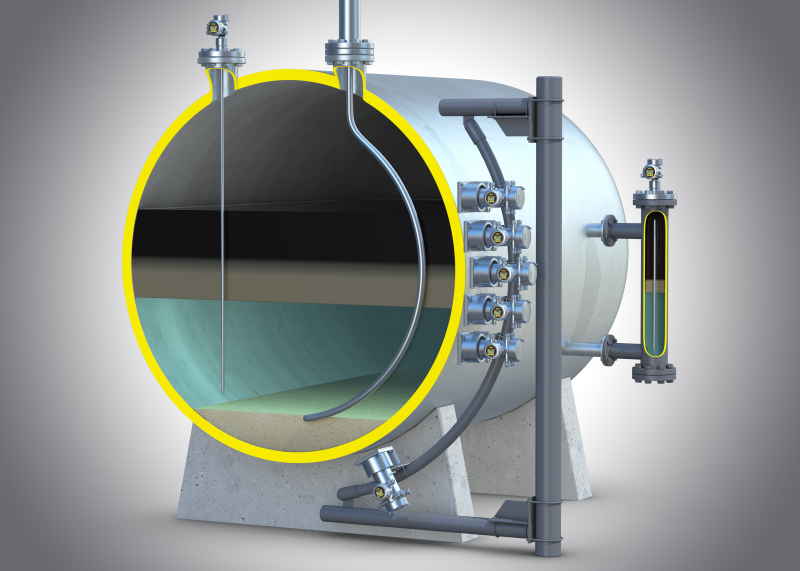VEGA’s strong tradition of product development and refinement continues with the Multi-Point Density Array (MDA) solution for fixed-point interface profiling measurements for these challenging interface/heavy emulsion processes. Following high interest at the recent SPE Offshore Europe Exhibition in Aberdeen, discover more about separator interphase and phase monitoring solutions in our technical article below.
 Over the years, many traditional technologies used for interface and, increasingly, multiphase measurement and control have often proven unreliable when heavy emulsions, sand, mud and foam are involved. This is because the parameters on which the measurements are based are not constant or stable and build up interferes with sensitive instruments used. Changes to both the products and processing in the vessel contribute to this uncertainty, making the separation characteristics and interface(s) difficult to understand and control effectively.
Over the years, many traditional technologies used for interface and, increasingly, multiphase measurement and control have often proven unreliable when heavy emulsions, sand, mud and foam are involved. This is because the parameters on which the measurements are based are not constant or stable and build up interferes with sensitive instruments used. Changes to both the products and processing in the vessel contribute to this uncertainty, making the separation characteristics and interface(s) difficult to understand and control effectively.
For applications in separators, treaters, free water knockout drums and desalters for example, the development of a clean and distinct, well-behaved interface boundary is often only achieved by longer residence times (not always available), large quantities of effective chemical demulsifiers (expensive), higher operating temperatures (extra energy inputs) or specialized separation technology (new capital equipment). However, in spite of these best efforts, there can still be a degree of an emulsion layer still remaining in the process, so how can that be effectively monitored and therefore controlled?
Effectively monitoring the emulsion layer between the upper and lower fluids is critical and being aware of multiple phases – foam, mud or sludge build up in the process is also extremely important. Understanding if and how these co-exist, behave and respond in the separation process, is key to the maximization of quality crude throughput.
Nuclear gauging technology can help with this, by making independent multiple density measurements across a defined span of the vessel elevation gives a valuable insight into the separation process. The operator has a density profile that monitors the dynamic changes on a real time basis. Detection of very small density changes verifies the separation development when subjected to different treatments. This can enable the automatic control of water withdrawal, dosing of additives, optimise production and minimise outages.
The VEGA Multi-Point Density Array radiometric solution works by measuring the changing density at fixed points across the process. Each point can be monitored to produce a detailed picture of what is happening in the vessel, along with point alarms for sand and foam detection. If no clear process interface exists, an emulsion layer can be accurately tracked from the brine on the bottom to the oil towards the top of the vessel.
The VEGA MDA system offers many benefits to the end user. These include:
1. Multi phase density profile across the elevation span monitors changes in the separation process on a real time basis.
2. Externally mounted electronics withstand higher process temperatures, offer easier maintenance and performance monitoring.
3. Monitoring each fixed point enables trending to show how the interface/emulsion is changing.
4. if any single density detector fails, it does not compromise the operation of the system, offering high reliability.
5. When no clear interface exists, the system provides valuable information about the emulsion layer.
6. Flexible mounting bracket system provides ease of installation.
7. Simple air and brine water calibration reduces the commissioning time to a minimum.
For more information regarding VEGA’s Multi-Point Density Array system please contact Gary Baker at VEGA Controls Ltd. gary.baker@vega.com. Or call our office on 01444 870055.

